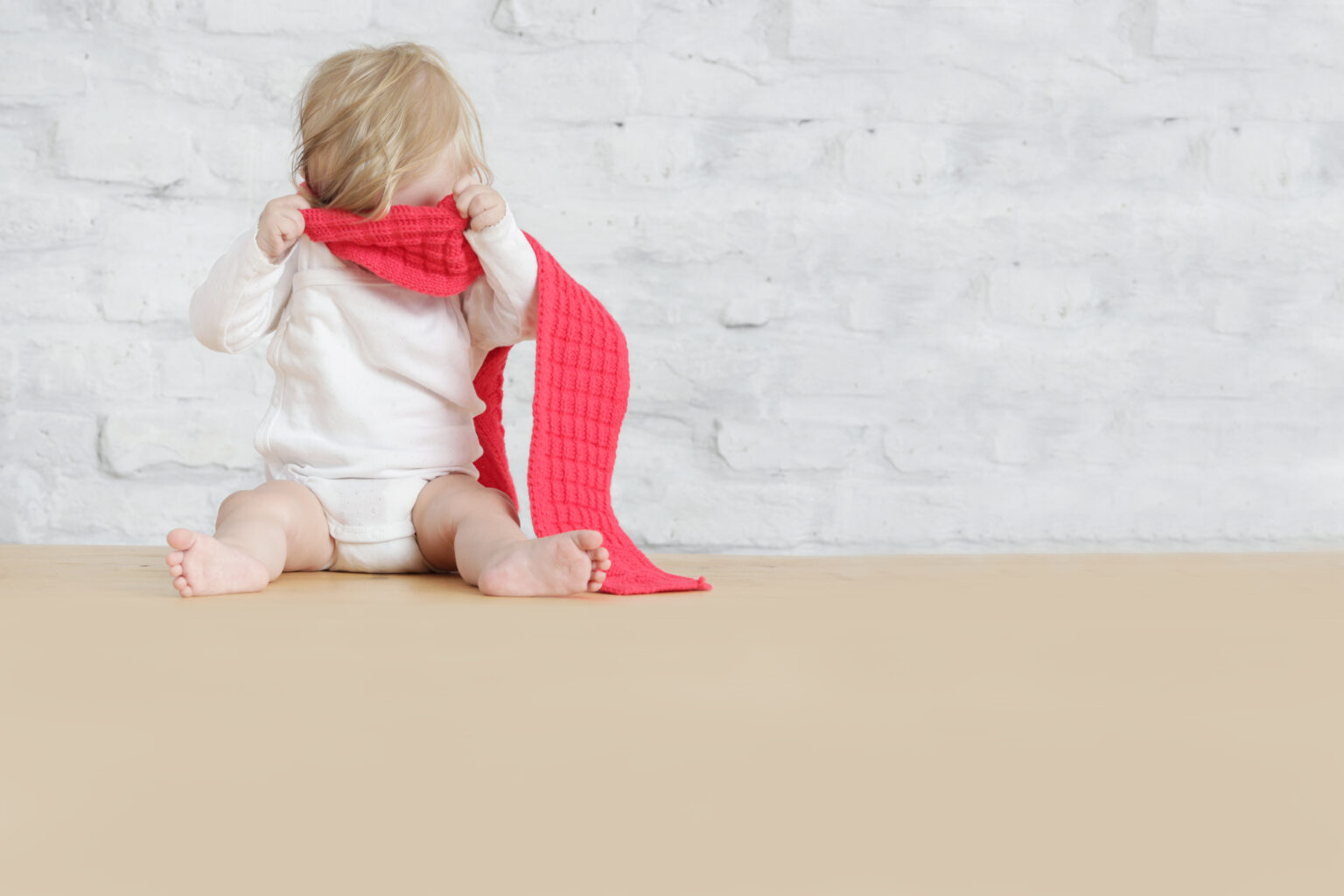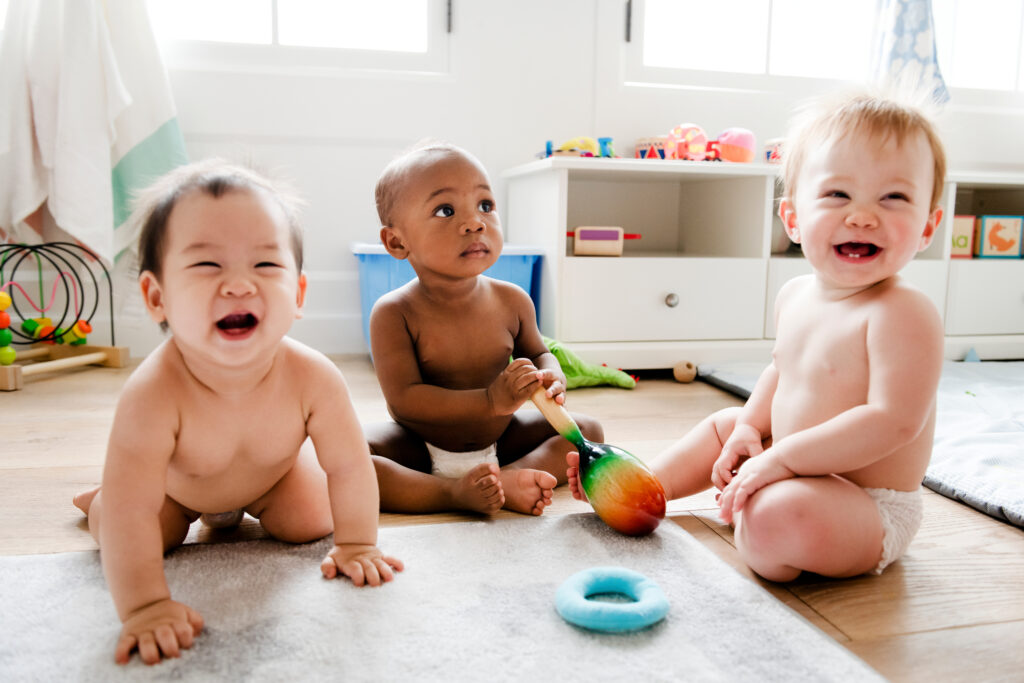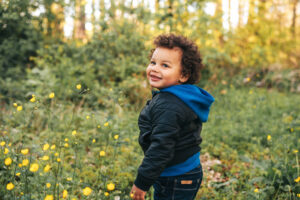The world is vast and full of new information, so how do children pick and choose what to pay attention to? How do they make sense of it all?
At the very early stages, babies rely on social interactions and their physical environment to learn. Games like ‘Peek-a-boo’ illustrate this perfectly: a well-loved game played for centuries, where a face is hidden and then, after a short while, reappears. In that brief moment of disappearance, numerous questions arise. Do they vanish forever? And will they ever return? A flicker of uncertainty crosses the baby’s face until… ‘Boo!’… the face reappears with warm smiles and reassurance, reinforcing feelings of safety and playfulness.
But this simple act is more than just a game; it symbolises trust, strengthening bonds and supporting healthy development. A simple act, yet a powerful interaction – one where babies learn that, even when something is out of sight, it’s not gone forever.
Why is predictability important?
This is where predictability comes into play. Psychologists often refer to children’s brains as ‘prediction machines’ that are constantly making predictions and testing whether they’re correct.
‘Peek-a-boo’ demonstrates this perfectly: when the game begins, the child expects that after hearing ‘peek-a-boo’, a face will reappear – and each ‘round’ of the game allows them to test that prediction, supporting brain development and reinforcing brain pathways crucial for learning. This repetition creates a sense of expectation and a predictable pattern; this is why babies love it so much and enjoy playing it over and over again.
These predictable patterns can be thought of as building little roadmaps in the child’s mind. The brain contains trillions of neural pathways, each like a little road that forms when new information is presented. For example, after a few games of ‘peek-a-boo’, a ‘road’ has been created that’s associated with the game. When the child predicts that the face will reappear, a signal travels down the road. In each round, the game allows the child to test their prediction. When this happens repeatedly, the road gets wider and stronger. In the context of the brain, it essentially means that this neural pathway becomes stronger and more stable as a result of repeated practice, with the child improving their ability to predict what will happen next in this situation.
This process of repetition and making predictions to learn, as seen in games like ‘peek-a-boo’, is linked to something called ‘neuroplasticity’. This is because brain structure and function can be moulded and adapted in response to stimuli and experiences. Each time children practise or repeat something, the pathways in their brains associated with that word or action are strengthened.
Although this process happens throughout life, it’s more pronounced during early childhood. During this time, billions of brain cells called neurons send electrical signals to communicate across different regions of the brain. This repeated, rapid activation strengthens synapses, leading to the formation of ‘simple circuits’. These simple circuits form the basic foundation of brain structure. The formation of synapses increases rapidly in the first few years of life due to neuroplasticity, and this process makes the brain highly receptive to learning and adaptation.
It’s because of this that young children seek out predictability. From banging a spoon on the table or pushing a button on a toy that makes a noise, they quickly realise that their action has a consequence, linking movement to sound. Similarly, rhyming couplets containing repetition, like in ‘Twinkle, Twinkle Little Star’, help the child predict what comes next, meaning that the child may finish with ‘star’ before it’s said.
Children also seek out predictability in their daily routines, helping to build a sense of routine and expectation. For instance, a child may learn that snack time comes after reading a book, and then it will be time for a nap; this forms a predictable pattern and supports the child in feeling safe and secure.
These forms of predictability aren’t just about back-and-forth exchanges, but about moment-to-moment experiences, as the child learns to expect specific outcomes based on their actions. Repetition helps with predictions and establishes cause-and-effect relationships between their actions and the world around them.
How does a lack of predictability affect children?
Conversely, when a child struggles to predict what will happen next, it can be confusing, making those tiny brain ‘roads’ very bumpy and hard to travel. For example, if an adult is inconsistent or unpredictable in their responses, the child may struggle to make accurate predictions. This may happen if a child leans into their caregiver for a cuddle, expecting them to reciprocate the affection. But if this response only happens some of the time, while at other times, the adult responds with irritation, the child will experience a disconnect between expectation and reality.
When this happens, similar situations become unpredictable for a child. They may feel stressed if their brains constantly ask, ‘What will happen next?’ and don’t get a clear answer. This stress fires like an internal alarm, leading to the release of cortisol, known as the stress hormone, triggering the fight or flight response. When stress is triggered repeatedly over time, it can lead to problems in development – especially for younger children, whose brains are not so good at making predictions.
Research shows that young children growing up in environments in which predictability, consistency, and routine aren’t typical may struggle in numerous areas of their lives. Though it’s important to note that some degree of uncertainty is normal and to be expected, long-term exposure to very unpredictable situations can impair brain development. This demonstrates why reinforcement, repetition and laying a strong foundation are essential.
This is where the power of predictability comes into play. For some children, situations like transitioning into early education and childcare can be challenging, and it may take time for them to settle. This is because these settings are much less predictable for children than at home, so the more we can do to support them during this process, the better. This may be through consistent daily routines, clear expectations, and safe and nurturing interactions, such as repeating stories, songs and activities; this allows the child to anticipate what’s coming next, promotes the formation of neural pathways needed for future learning, and supports their overall development. This also taps into their sense of safety: when the child knows what to expect, they’ll feel more secure. This is why keeping it the same works – building these early strong pathways supports not only the child’s short-term development but also shapes their future outcomes.
Practical tips
It may seem boring for us as adults, but it’s important to keep things the same, especially when children appear to be seeking out repetition. This may involve reading the same book, singing the same song, watching the same things and playing the same games, as it supports children’s brains in growing strong and stable neural connections.
If changes are going to happen, give children as much warning as possible so that they can prepare themselves and avoid unnecessary confusion.




